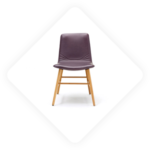Using a Dr. Pen, which is a microneedling device, can help improve the appearance of your skin in various ways. Here are five important things you should know before using Dr. Pen on your face:
1. Consult a Professional: Before starting any microneedling treatment at home, it’s essential to consult with a dermatologist or skincare professional. They can assess your skin type, discuss any concerns, and determine if microneedling is suitable for you.
2. Preparation is Key: Make sure to prepare your skin before using Dr. Pen. Cleanse your face thoroughly to remove any dirt, oil, or makeup. It’s also recommended to apply a topical numbing cream about 30 minutes before the procedure to minimize discomfort.
3. Understand the Technique: When using Dr. Pen, it’s important to use the right technique. Hold the device at a 90-degree angle to your skin and move it in a patterned motion (up and down, left to right, and diagonally). Avoid applying too much pressure; let the needle tip do the work.
4. Post-Treatment Care: After using Dr. Pen, your skin may be red and sensitive, similar to a mild sunburn. Avoid direct sunlight, harsh skincare products, and makeup for at least 24 hours. Instead, opt for gentle, hydrating products and sunscreen to protect your skin.
5. Follow a Treatment Schedule: For best results, it’s advised to follow a treatment schedule. Depending on your skin type and concerns, multiple sessions may be necessary, typically spaced 4-6 weeks apart. Monitor your skin’s response drpen a8s and adjust the frequency as needed.
In conclusion, while Dr. Pen can be an effective tool for improving skin texture and tone, proper usage and aftercare are crucial for optimal results and skin safety.
Understanding Micro-Needling
Micro-needling is a revolutionary skincare treatment that involves the use of a device equipped with fine needles to create controlled micro-injuries in the skin. This process stimulates the body’s natural healing response, leading to increased collagen and elastin production, which are vital for maintaining the skin’s firmness and elasticity. If you’re considering using a Dr.Pen device for micro-needling on your face, here are five essential things you need to know:
1. The Science Behind Micro-Needling: The primary goal of micro-needling is to rejuvenate the skin. By creating micro-channels in the epidermis, the treatment facilitates the absorption of topical products and enhances the skin’s overall texture and tone. It’s an effective option for people seeking to reduce the appearance of scars, fine lines, and wrinkles, as well as improve skin conditions like acne and enlarged pores.
2. Preparation is Key: Before starting treatment with the Dr.Pen, it’s crucial to prepare your skin correctly. This involves cleansing your face thoroughly and ensuring that any makeup or skincare products are removed. Depending on your skin sensitivity, using a topical numbing cream may also be advisable to minimize discomfort during the procedure.
3. Technique Matters: Using the Dr.Pen requires a specific technique to achieve optimal results. It’s essential to maintain a consistent speed and pressure as you glide the device over your skin. Ideally, you should work in sections and follow a prescribed pattern to ensure even coverage. Learning the right approach, either through tutorials or professional guidance, can make a significant difference in the effectiveness of your micro-needling session.
4. Post-Treatment Care: After micro-needling, your skin may be red and sensitive, similar to a mild sunburn. It’s vital to adhere to a proper aftercare routine to aid healing. This includes avoiding direct sunlight, skipping makeup for at least 24 hours, and using gentle, hydrating products to soothe your skin. Keeping your skin well-moisturized will help in the recovery process and enhance the results.
5. Schedule Regular Sessions: For optimal results, micro-needling is not typically a one-and-done procedure. Many practitioners recommend a series of treatments spaced about 4 to 6 weeks apart. This interval allows your skin to heal and regenerate while maximizing the benefits of increased collagen production over time. Monitoring your progress and consulting with a skincare professional can help you determine the ideal frequency for your sessions.
Understanding micro-needling and how to use the Dr.Pen effectively on your face can lead to transformative results for your skin. With proper preparation, technique, and care, you can harness the power of this innovative treatment for a radiant, youthful complexion.
Common Mistakes to Avoid
Micro-needling is a revolutionary skincare technique that utilizes tiny, sterile needles to create micro-injuries in the skin, triggering the body’s natural healing processes and stimulating collagen and elastin production. If you’re considering using a device like the Dr.Pen on your face, understanding the fundamentals of micro-needling is crucial to achieving optimal results while ensuring safety.
1. What Micro-Needling Does: The primary purpose of micro-needling is to rejuvenate the skin by improving its texture and firmness. This process can effectively reduce the appearance of scars, fine lines, wrinkles, and even enlarged pores. When applied correctly, micro-needling can enhance the absorption of topical skincare products, allowing them to penetrate deeper into the skin.
2. The Procedure: During a micro-needling session, the Dr.Pen utilizes a series of ultra-fine needles that move vertically to create controlled micro-injuries in the skin. Depending on your skin’s sensitivity and the treatment area, the depth of the needles can vary. The whole procedure typically lasts about 30 to 60 minutes, and while some mild discomfort might be felt, a topical numbing cream is usually applied beforehand to minimize pain.
3. Post-Treatment Care: After using the Dr.Pen, your skin may appear red and slightly swollen, resembling a mild sunburn. This is a normal response and should subside within a few days. It’s crucial to follow proper post-treatment care, which includes avoiding sun exposure, applying gentle moisturizers, and steering clear of harsh chemicals or active ingredients (like retinol) during the healing process to allow your skin to recover optimally.
4. Frequency of Treatments: While many people see improvements after just one session, the best results typically come from a series of treatments. Most skincare professionals recommend scheduling micro-needling sessions every 4 to 6 weeks, depending on individual skin types and goals. It’s essential to assess your skin’s reaction after each treatment before deciding on the frequency of future sessions.
5. Not for Everyone: While micro-needling can be an effective skin treatment for many, it’s not suitable for everyone. Individuals with certain skin conditions—such as active acne, eczema, or psoriasis—should consult a dermatologist before proceeding with micro-needling. Additionally, those with a history of keloid scarring or who are on blood-thinning medications may need to avoid this treatment.
Understanding micro-needling and how it works can empower you to make informed decisions about using devices like the Dr.Pen on your face. Always prioritize safety—consider seeking guidance from a licensed professional if you are new to micro-needling, or if you have specific skin concerns or conditions. This way, you can achieve glowing, rejuvenated skin while minimizing risks.







